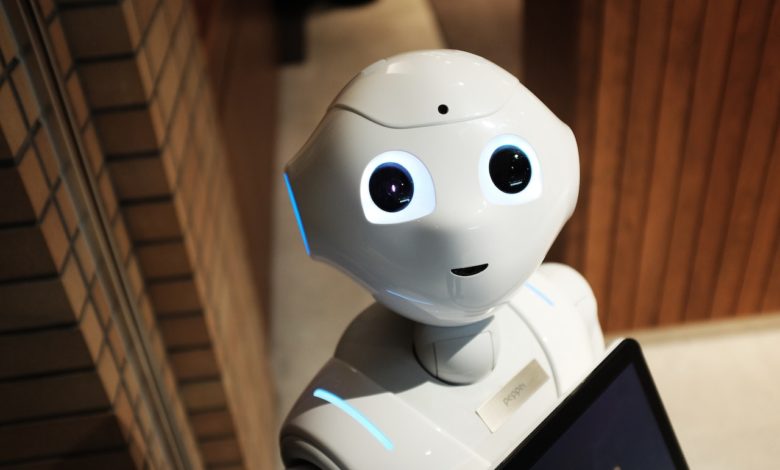
.com Crash to AI Rise – Reflections
The dot-com rise and crash in 2000 was indeed a significant event that shaped the technology and business landscape. It was a period marked by exuberant enthusiasm and sky-high expectations for the potential of the internet, resulting in a speculative bubble that eventually burst. The crash served as a reality check, reminding us that not every technology or business model is a guaranteed path to success.
As for the current rise of AI, it’s important to approach it with a balanced perspective. AI undoubtedly holds immense potential and has already shown remarkable advancements in various domains. However, it’s crucial to recognize that AI is not a one-size-fits-all solution or a magic bullet that can solve all problems. Like any technology, AI has its limitations and is best suited for specific use cases and circumstances.
“AI is not the master key unlocking all doors. It’s a tool, an instrument in our hand, enhancing our capability to open the right doors more effectively.”
Businesses embracing AI should have a clear understanding of its strengths, weaknesses, and potential risks. While AI can automate certain tasks, enhance decision-making processes, and unlock new opportunities, it’s essential to have realistic expectations and recognize that successful AI implementation requires careful planning, expertise, and a deep understanding of the underlying data.
History teaches us valuable lessons, and the dot-com crash serves as a reminder to approach technological advancements with a critical eye. It’s important to view AI as a powerful tool that, when used appropriately and responsibly, can bring significant benefits to businesses and society. By acknowledging its limitations and avoiding hype-driven expectations, we can foster a more balanced and sustainable approach to leveraging AI’s potential while avoiding potential pitfalls.
Stocks market reflections
There are indeed some parallels to be observed between the stock rises witnessed during the dot-com period and the current market trend. During the dot-com era, there was a tremendous surge in stock prices of internet-related companies, fueled by investor enthusiasm and the belief in the transformative power of the internet. This led to an unprecedented valuation bubble that eventually burst, causing significant market turbulence and financial losses.
Similarly, in recent years, we have seen a remarkable rise in the stock prices of companies associated with emerging technologies, particularly in the field of artificial intelligence (AI). Investors have been captivated by the potential of AI to revolutionize industries, streamline processes, and drive economic growth. This optimism has driven up the valuations of AI-focused companies, creating a sense of excitement reminiscent of the dot-com era.
AI “panacea” is not what it is to be
In 1999, there was an overwhelming belief that the internet would completely revolutionize and take over all aspects of business. Many envisioned a future where traditional business models would be completely disrupted, and the internet would be the solution to all problems. However, what became apparent over time was that the internet is not a panacea but rather a powerful tool, a utility that enables businesses to operate more efficiently and connect on a global scale.
Similarly, today we find ourselves in a similar situation with the rising expectations surrounding artificial intelligence (AI). There is a tendency to view AI as a magical solution capable of solving every business problem and unlocking unprecedented success. However, it is crucial to recognize that AI, like the internet, is a tool—a remarkable one at that—but not a standalone solution to all challenges.
AI has the potential to enhance decision-making, automate tasks, and generate valuable insights, but it is not a replacement for human judgment, creativity, and strategic thinking. It is essential to approach AI with a realistic mindset, understanding its strengths, limitations, and specific applicability to different use cases.
Just as the internet became an essential utility that transformed how businesses operate, AI is becoming an increasingly valuable tool in various industries. However, it is crucial to remember that successful implementation of AI requires careful consideration of its fit within specific business contexts and understanding its limitations.
Evolutionary AI
AI, or artificial intelligence, is indeed a language learning model that has its roots dating back to the 1980s. While it has seen advancements and enhancements over the years, it is important to recognize that there is nothing fundamentally new about the concept of AI. The hype surrounding AI is real, but it often stems from exaggerated claims and inflated expectations rather than groundbreaking developments.
One aspect that solidifies this claim is the fact that AI relies on existing technologies and methodologies, such as machine learning and deep learning, which have been evolving for decades. These techniques involve training models on vast amounts of data to recognize patterns and make predictions. While the scale and computational power have increased, the underlying principles remain the same.
Moreover, the notion of AI as an all-knowing, super-intelligent entity is a misconception perpetuated by popular culture and media. In reality, AI models are highly specialized and designed to excel in specific tasks, often with limitations in generalization and understanding context beyond their trained data.
It is also worth noting that the recent breakthroughs in AI, such as the development of large language models like GPT-3, are advancements in scale rather than in fundamental technological concepts. These models are built on the foundations laid down by earlier AI research.
10+ years forward outlook for AI
As we look into the next decade, it is reasonable to expect that the implementation of AI will have a notable impact on various job families across different industries. While it is important to note that the extent of impact may vary, here are some job families that are likely to be influenced:
- Routine and Repetitive Tasks: Jobs involving repetitive and rule-based tasks, such as data entry, basic administrative tasks, and assembly line work, are susceptible to automation through AI technologies. These roles can be streamlined or partially replaced by AI-powered systems and robotic process automation.
- Customer Service and Support: AI-powered chatbots and virtual assistants are already transforming customer service interactions. While AI can handle routine inquiries and provide basic support, human agents will still be essential for complex problem-solving, empathy, and building relationships with customers.
- Data Analysis and Insights: AI can significantly impact roles involving data analysis and insights. Machine learning algorithms can process and analyze vast amounts of data at a faster pace, helping professionals in fields like finance, marketing, and research to derive insights and make informed decisions. However, human expertise will still be necessary to interpret results, validate findings, and provide contextual understanding.
- Transportation and Delivery Services: The rise of autonomous vehicles and drones driven by AI technologies may disrupt certain transportation and delivery roles. Truck drivers, delivery personnel, and taxi drivers could see changes as automation gradually replaces manual driving tasks, although the full transition may take time due to regulatory, infrastructure, and safety considerations.
- Manufacturing and Production: AI-powered robots and automation systems are transforming manufacturing processes. While this may reduce the need for certain manual labor jobs, there will still be a demand for skilled technicians, engineers, and operators who can manage, maintain, and optimize these AI-driven systems.
- Healthcare and Diagnostics: AI has the potential to revolutionize healthcare by assisting in diagnostics, drug discovery, and personalized treatment plans. Radiologists, pathologists, and other medical professionals may see changes in their roles as AI algorithms aid in image analysis and diagnostic decision-making. However, human expertise and ethical considerations will remain crucial in complex medical situations.
Final reflections
In conclusion, it is essential to approach the implementation of AI as a tool with a balanced and realistic perspective. Drawing parallels from historical events like the dot-com rise and crash, we understand that AI is not a magical solution that will revolutionize all aspects of business or replace human expertise entirely.
AI, rooted in decades of research and advancements, is a powerful tool that can enhance efficiency, decision-making, and innovation in various industries. It has the potential to automate routine tasks, provide data-driven insights, and improve processes. However, it is crucial to recognize its limitations and understand that successful AI implementation requires careful consideration of its applicability, human oversight, and ethical considerations.
While certain job families may experience transformation or displacement due to AI, new opportunities will emerge, and human skills such as creativity, critical thinking, and emotional intelligence will remain highly valuable. It is important to approach AI with a focus on reskilling and upskilling the workforce, fostering a harmonious collaboration between humans and machines.
Avoiding hype and unrealistic expectations is crucial. By viewing AI as a tool rather than a silver bullet, businesses can make informed decisions about AI implementation, identifying specific use cases where it can truly add value. It is through this solid analysis and understanding of AI’s capabilities and limitations that organizations can navigate the AI landscape, leverage its potential, and drive sustainable growth in the years to come.




Interesting parallels – I have been doubtful about this whole AI craze happening now. Thank You, Dennis.